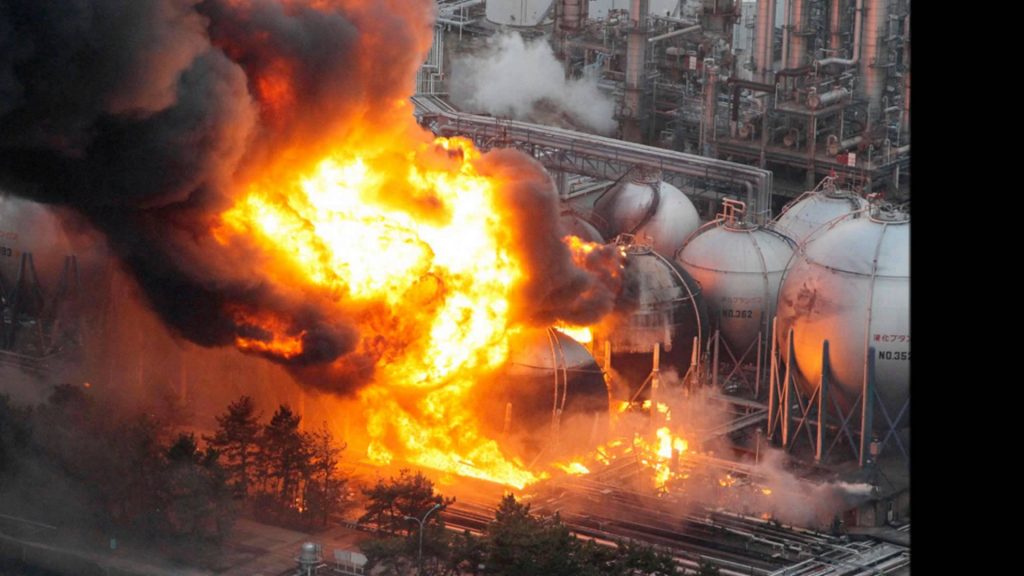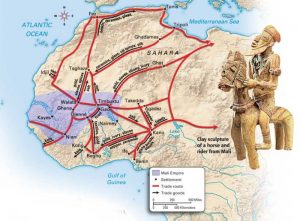Natural disasters are very common but tragic events around the world. From earthquakes to tornadoes, geological disasters can cause increasingly damaging effects, affecting the landscape and those who find themselves there. But when these events are combined with man-made artifacts, the effects might be even greater. An example of this is the Fukushima Disaster in Japan, the worst nuclear disaster since the 1986 Chernobyl incident.1 But the cause of this horrific disaster wasn’t particularly a man-made event. In fact, it all started with a wave.

On March 11, 2011, an earthquake with a magnitude 9.0—the worst to ever hit Japan—hit the country. It was such a powerful catastrophe, that Japan’s main island, Honshu, was permanently moved more than two meters to the east. As the earthquake gained momentum, waves up to 40 meters began crushing the country’s coast. The effects of the earthquake and the waves were too much for the Japanese. More than 20,000 people died or went missing and hundreds of thousands more lost their homes.2 But the worst was yet to come. Fifty minutes after the initial earthquake, a ten-meter high sea wall hit the Fukushima Daiichi (Number One) nuclear power plant. The water flooded the plant’s emergency power generators, knocking vital cooling systems offline, triggering a meltdown of reactor fuel rods. These then leaked deadly radiation into the coastal atmosphere of Japan. With the cooling systems not working, hydrogen gas built up in the reactor buildings, causing several hydrogen explosions in the following days of the earthquake.3

Because of the highly toxic radioactive material that leaked to the surrounding areas of the power plant, the government began to evacuate 80,000 people from a twelve-mile radius. Technicians turned to several things to try to cool the nuclear fuel, like using fresh water, seawater, and injecting nitrogen into the reactor containment buildings to prevent further explosions.4 But despite the efforts to try to help the people of Honshu, the government didn’t tell the people the truth. The official statistics of the event and even the admittance that the meltdown had taken place weren’t disclosed until eighty-eight days later.5
It was estimated that more than 800,000 tons of highly-radioactive material sat near the accident, which was slowly getting into the ground and moving towards the ocean. Although many people were evacuated, there were still many that couldn’t leave. The government installed temporary housing that was intended to house tens of thousands of people after the disaster for twenty-four months. But five years after the disaster, thousands of people were still living where they were surrounded by the radioactive material. Many of those who remained were the elderly and low-income families who had few options to move away.6

Several months after the disaster, people in other parts of Japan began rallying to help these people and bring an end to nuclear power plants in Japan. This pushed forward for the closure of all of the other nuclear plants in Japan for maintenance and inspection.7 These protests also pressured the government to issue a report on the disaster at Fukushima. This report criticized TEPCO (the Tokyo Electric and Power Company) for failing to address concerns about safeguards at the plant. This report also included information about how TEPCO officials had ignored engineers’ concerns that a seawall constructed to protect against major tsunamis as they had seen on March 11 was not sufficient. The report additionally criticized safety regulators for not implementing proper safety measures and for failing to adopt global nuclear safety standards.8 This was really important for the Japanese because TEPCO had always emphasized that the nuclear generators were “fail-safe,” that the facility was completely earthquake resistant and that the reactors would be able to withstand a major tremor.9
Five years after the disaster in Japan, several policies were changed to address the rising concerns of the Japanese population regarding nuclear power plants. The major decision of this kind was the decision to phase-out nuclear power plants during the 2030s as part of Innovative Strategy for Energy and the Environment adopted by the cabinet of the Democratic Party of Japan (DPJ).10 TEPCO is still facing criticism regarding the amount of nuclear material that was leaked into the environment and it is estimated that cleanup operations could take up to forty years.11
- Will Ripley, Junko Ogura, and James Griffiths, “Fukushima: Five Years after Japan’s Worst Nuclear Disaster,” CNN, March 11, 2016, sec. World. ↵
- Encyclopedia Britannica, 2018, s.v. “Fukushima Accident.” ↵
- New World Encyclopedia, 2017, s.v. “Fukushima nuclear disaster.” ↵
- New World Encyclopedia, 2017, s.v. “Fukushima nuclear disaster.” ↵
- Will Ripley, Junko Ogura, and James Griffiths, “Fukushima: Five Years after Japan’s Worst Nuclear Disaster,” CNN, March 11, 2016, sec. World. ↵
- Will Ripley, Junko Ogura, and James Griffiths, “Fukushima: Five Years after Japan’s Worst Nuclear Disaster,” CNN, March 11, 2016, sec. World. ↵
- New World Encyclopedia, 2017, s.v. “Fukushima nuclear disaster,” ↵
- Encyclopedia Britannica, 2018, s.v. “Fukushima Accident.” ↵
- Akira Nakamura and Masao Kikuchi. “What We Know, and What We Have Not Yet Learned: Triple Disasters and the Fukushima Nuclear Fiasco in Japan,” Public Administration Review 71, no. 6 (2011): 894. ↵
- Rie Watanabe, “After the Fukushima Disaster: Japan’s Nuclear Policy Change from 2011 to 2012,” Review Of Policy Research 33, no. 6 (2016): 623. ↵
- Alexis Dudden, “The Ongoing Disaster,” The Journal of Asian Studies 71, no. 2 (2012): 349. ↵




111 comments
Eric Ortega Rodriguez
This is the first time I hear about The Fukushima Disaster. Nonetheless, did I know that this was still affecting Japan today. It is bizarre to read that it took such a long time for the Japanese government to respond with information to its citizens. They did not care how dangerous exposure to radioactive material could be on the human body. Overall, this was a great read with good information and images. Good work.
Tala Owens
I remember hearing about the earthquake on Japan. To know it was on a level 9 was terrifying and I can’t image what those people were going through. It was very disastrous and tragic to hear and see about. I was happy to see that they protested against power plants in their country. The casualties that were left from the earthquake and wave were one of the worst the world has ever seen so I’m glad they protested against something like this happening in their country again.
Chelsea Alvarez
This article was very interesting. The events that occurred are unimaginable and disastrous. It is appalling to know that the government did not inform the public about the severity of the events. I liked the images utilized to show how the Japanese protested for nuclear power plants to close. It’s a relief that there were policies implemented to protect these people from being harmed by any future nuclear power plant explosions.
Danielle Slaughter
I remember watching this unfold on the news as clearly as if it were yesterday. What a terrible tragedy to have occurred to the people of Japan. Unfortunate though it was, nuclear power plants exist all over the world with nary an incident to report on. As awful as these meltdowns are, the truth is, in over 30 years there have only been three major accidents. Nuclear fuel is the cleanest, most efficient energy source we have. However, having said that, human error is always an issue.
Eric Ortega Rodriguez
Prior to this article, I had never heard about The Fukushima Disaster. I find it surprising to read that this is something that still affects Japan today. I think it is terrible to read how long it took for the government to release information to the people of Japan. The fear that citizens go through must have great considering the effects that toxic radioactive material can have on the human body. This casualty should be used as a learning experience to avoid any further events such as this one. Overall, this article was very well written with a very good topic selection. Good work.
Madison Guerra
This was such a horrible disaster, i remember hearing about this and all of the problems that happened because of the earthquake. I think that it was really wrong that their government lied about the severity of the situation and i think it was a good idea for those people to protest about it. It is very sad that it happened in the first place and that some people weren’t able to leave.
Enrique Segovia
I remember when the news about the cataclysmic 9.0 earthquake that hit Japan emerged. I was astonished, but in the following days, everything just kept getting worse, as this article explains. The series of subsequent events that struck Japan marked history as one of the deadliest natural disasters ever. The powerful earthquake created an enormous wave that hit Japan, and as the article says, it was so hard that it even moved an island. Then, all the damages by the water created a nuclear reactor to collapse on Fukushima, prompting more danger to the Japanese.
Faten Al Shaibi
Technology has many aspects of helping mankind but at the same time there is a catastrophic risk like the one mentioned in this article.
Governments must take into account the expected dangers to the population So all reactors must be far from the populated areas or reliance on other sources of energy even if they are expensive because human life is more precious than anything else.
Harashang Gajjar
Well, good. It is easier to be wise after the fact. Can nuclear industries worldwide institute the kind of no-fault neutral reporting pioneered by the aviation industry to enable lessons to be drawn from near-miss situations?I suspect not, because at the heart of the industry is a massive lie: nuclear power has never been economically viable, when waste management is taken into account. It was always about generating material fro nuclear weapons. Japan and Germany are seized off this truth; they will be the richer for deploying their resources in more sustainable directions.Elsewhere, still living the big lie, so why sweat on the smaller ones? There are 440 nuclear power stations worldwide. Expect roughly one to blow per decade, not through any external agency, just through aging, complacency, stupidity and secrecy
Diego Aguilera
Anything nuclear is very dangerous and in fact this article displayed that and much more imagery regarding the effects and the heartbreaking tragedy. I really enjoyed this article as it made me feel like I was there. What has me thinking is the plan to clean up and how to deal with all the casualties. The first thing that came to my mind when I read this article was Chernobyl. I would love to do more research and learn more.